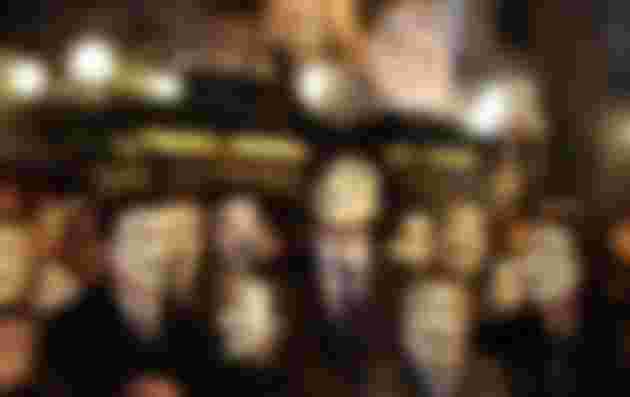Today, it is almost impossible to imagine any political protest without the appearance of a characteristic white mask that has become a protective symbol of modern uprisings. The mask is also a trademark of Anonymous, a decentralized network of activists and hackers advocating for internet freedom, the abolition of censorship, and restrictive copyright laws.
The mask that became a symbol of the modern revolution represents the face of Guy Fawkes, a member of a group of Catholic extremists who planned the famous ‘Gunpowder Conspiracy’ in 1605 aimed at overthrowing Protestant rule in England and imposing Catholic.
Who was Guy Fawkes?

One of the most prominent symbols of today’s revolutions is the 17th-century English revolutionary, Guy Fawkes, who became famous for trying to blow up parliament to destabilize the British [Protestant] government.
Personally, Fawkes was an imposing man. His former school friend Oswald Tesimond, who became a Catholic priest, described him as a man of "pleasant and cheerful approach" loyal to his friends. " Tesimond also claimed that Fawkes was "very skilled in matters of war," while historian Antonia Fraser describes him as a "tall, strong-built man, with thick reddish-brown hair, a mustache, a reddish-brown beard, a man of action, capable, with intelligent arguments, as well as physically enduring, in a way, was a surprise to his enemies. ”
“Desperate illness requires dangerous medicine. ”- Guy Fawkes
Guy Fawkes was born on April 13, 1570 in Stonegate, Yorkshire. He was the second of four children of Edward Fawkes and his wife Edith. Like many other people living at the time, not much is known about Fawkes ’early life, except that he grew up in a Catholic setting in Protestant England.
By the age of 21, he had sold a property left to him by his father and went to Europe to fight for Catholic Spain against the Protestant Dutch Republic. His military career went very well, so in 1603 he was recommended for the title of captain. At that time, he left his name ‘Guy’ and adopted the Italian variant ‘Guido’.
In 1603 he left his unit and received permission to go to Spain. In the same year he traveled to Spain and asked King Philip III to give his support in planning a revolt in England against the “heretics” James I. Despite the fact that Spain and Great Britain were technically still at war, Philip refused.
During the campaign in Flanders, Fawkes was approached by Thomas Wintour, one of the conspirators, and asked to join a group led by Robert Catesby which later became known as the group responsible for the ‘Gunpowder Conspiracy’.
Unsuccessful Gunpowder Conspiracy

The military experience - the gunpowder experience - gave Fawkes a very dangerous role in the conspiracy - to store and finally set fire to the explosives. But 18 months of careful planning was wasted, for on November 4, 1605, Fawkes was arrested just a few hours before he was to set fire to the explosives.
Just as the conspiracy was carefully planned, so did Robert Cecil, the English king's top spy, work carefully to uncover it. In the basement, just below where the king was supposed to sit during the opening of parliament the next day, thirty-six stacked barrels full of gunpowder were found.
After his arrest, Fawkes was subjected to various tortures. The torture was technically illegal, but James I (the then king) personally issued a permit that allowed the torture to continue. Fawkes endured two days of terrible pain before admitting everything. His signature on the confession was the signature of a man who was obviously broken, the letters themselves telling the story of someone who was barely able to hold a pen. James I himself even stated that he admired Fawkes' endurance during the torture.
After pleading guilty, Fawkes was sentenced to the traditional treacherous death penalty: "hanging and dismembering the body into four parts." During the hanging, Fawkes jumped off the gallows and broke his own neck to avoid the horror that awaited him - cutting his body while he was still alive. Still, he couldn't avoid having his testicles cut off alive and watching his intestines come out of his own stomach. His lifeless body was cut into four pieces that were sent to the “four ends of the kingdom” as a warning to others.
How did Fawkes ’face become a symbol of modern rebellion?

Over the centuries, the legend of Fawkes became increasingly popular, and by the 19th century his portrait was placed above the great campfires that were lit each year, as a memorial to his failure.
Guy Fawkes became famous all over the world only after the popular graphic novel, V for Vendetta (2006), in which the main character dresses like Fawkes and fights against a fictitious evil dystopian government in England. After appearing on online forums, Fawkes ’face mask has become a well-known symbol for online hacktivists, such as Anonymous, Occupy movements, and many other anti-government groups around the world.
"A man is the least of his own when he tells you something in person. Give him a mask and he will tell you the truth. ” - Oscar Wilde
In developing the idea for “V for Vendetta,” illustrator David Lloyd wrote to comic book author Alan Moore: “Why wouldn’t we portray him [the main character] as a resurrected Guy Fawkes, along with one of those paper masks, a coat and a hat? It would look very bizarre and would give Guy Fawkes the image he deserved all these years. We should not burn the guy every November 5, but celebrate his attempt to blow up the parliament! ” Moore responded to this idea: "All the fragments in my head came together abruptly, united behind the unique image of Guy Fawkes' mask."
Since 2008, Fawkes ’face (mask) has been seen at several protests, and as early as 2011, during Occupy Wall Street and other Occupy protests, the mask has become an international symbol of modern rebellion.



I saw this mask for the first time in a video on TV, and after that, kids around the city started wearing it en masse. They started making wardrobe with an application of that mask, as popular as it was the previous year